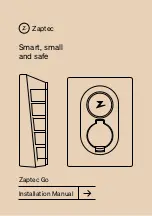
42 | SAMLEX AMERICA INC.
SCReen 8
equalization Voltage =
14 ~ 16 VDC for 12V battery / 28 ~ 32 VDC for 24V battery
(Default at 15.3 VDC / 30.6 VDC)
E
q
u
a
l
i
z
a
t
i
o
n
v
o
l
t
a
g
e
x
x
.
x
v
d
c
Equalization is a deliberate overcharge of the battery for a specified time
period. Equalizing your batteries will reduce sulfation and help reach and
maintain the peak capacity of the battery. An equalization charge should
only be performed on vented, flooded (non-sealed or "wet") batteries
and not on the sealed AGM / Gel Cell batteries and only as often as
recommended by the battery manufacturer.
During normal charging, temperature and chemical imbalances
prevent some cells from reaching full charge. These reduced capacity
cells accelerate sulfation (the build up of Lead Sulfate on the battery
plates) and decrease the Ampere-hour capacity of the battery. During
equalization, the battery is intentionally held above the Gassing voltage.
Fully charged cells dissipate the charging energy by gassing while
incompletely charged cells continue to charge. The rapid gassing that
occurs during equalization also helps to recondition the battery. The
gassing creates a stirring action, which reverses electrolyte stratification
(the separation of the liquid electrolyte into layers of different acid
concentrations). The stirring action also helps to break up any Lead
Sulfate, which may remain after normal charging.
The desired Equalization voltage can be programmed through this screen
as follows:
Parameter
12v version
24v version
Programmable
Range
Default
Programmable
Range
Default
Equalization
voltage
14 to 16 vDC
15.3
vDC
28 to 32 vDC
30.6
vDC
As explained in
Section 4 titled “battery Charging in G4 Series”
, G4
Series uses Adaptive Charging Algorithm for the Equalization Stage that
automatically computes the Equalization Time.
Please refer to details under heading "4 Stage Charging Profile in
Manually Activated Equalization Mode" on page 17 and Charging Curve
in Fig. 4.2 on page 18 for the following explanation.
When Equalization is initiated manually, the charger will first execute Bulk
Stage followed by Boost (Absorption) Stage. On completion of Boost
Stage, the charger will execute Equalization Stage. After completion of
Equalization Stage, the charger will enter Float Stage. The transitions will
be as follows:
• Bulk Stage (Constant Current)
Boost (Absorption) Stage
(Constant voltage)
Equalization Stage (Constant voltage)
Float stage (Constant voltage).
• During the Bulk Stage, the charger will charge at the programmed
Bulk Charge Current (See Setting Menu, SCREEN 6, page 41)
• A Software Timer is used to measure the time taken from the time
the unit transfers to the Utility / Generator Mode until the battery
charger reaches 0.3v below the Boost (Absorption) voltage, then
registered this time as time To. The following times are computed
based on the time To:
-
Boost (Absorption) Time T1 = To x 0.5
-
Equalization Time T2 is then computed based on the following
logic:
T2 = T1 + 1 hr = 0.5 To + 1 hr; if T1 < 2 hrs
T2 = T1 + 2 hrs = 0.5 To + 2 hrs; if 2 < T1 < 4 hrs
T2 = T1 + 4 hrs = 0.5 To + 4 hrs; if T1 > 4 hrs
• When the battery reaches the programmed Boost (Absorption)
voltage (See Setting Menu, SCREEN 4, page 41), it transitions to
the Boost (Absorption) voltage and remains in this stage for the
computed time T1.
• At the end of Boost (Absorption) Stage, it transitions to the
programmed Equalization voltage (See Setting Menu SCREEN 8,
page 42).
It remains in this stage for the computed time T2.
• At the end of Equalization Stage, the charger transitions to the
programmed Float voltage (See Setting Menu, SCREEN 5, page 41).
Display Screens
Display Screens In Inverter Mode
In case AC input power is not available or if available but is not within
the programmed specifications of voltage and frequency, the load will be
powered / transferred to the internal inverter.
The following 5 screens of information can be accessed in the Inverter
Mode. The screens can be scrolled using the “Up” or “Down” Keys.
Please note that the up to down order of appearance of the screens
shown below (Screen 1
Screen 2
Screen 3
Screen 4
Screen 5
Screen 1
Screen 2, etc.) is valid when using the “Up”
Key. The order will be reversed (bottom to top i.e. Screen 5
Screen 4
Screen 3
Screen 2
Screen 1
Screen 5
Screen 4,
etc.) if the “Down” Key is used. Please also note that the scrolling of the
display screens is in a continuous loop.
SCReen 1
Press “Up”Key to go to SCREEN 2
I
n
v
e
r
t
e
r
M o
d
e
SCReen 2
Press “Up”Key to go to SCREEN 3
I
n
p
u
t
S
t
a
t
u
s
x
x
x
v
a
c
x
x
.
x
H
z
SECTION 7 |
Setting Menu and
display Screens
















































